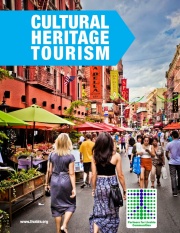
In our 37th year as an organization helping to empower communities with the tools to put them on the map as leaders in livability, Partners for Livable Communities is pleased to present this updated publication on cultural heritage tourism. As the tourism industry has boomed in the decades since Partners for Livable Communities began its cultural heritage tourism initiatives, communities have become increasingly eager to find ways attract tourists and capture the dollars they bring with them. However, when hard times come, it can be a challenge to persuade those among us of the benefits of preserving culture, heritage, and their artifacts from the past.
This guide represents the culmination of our experience and knowledge on an issue that has such a great potential for community development. Our hope is to demonstrate how cultural heritage is not just something to preserve for future generations, but is in fact an asset that can be leveraged to bring real economic benefits to the community.
Robert McNulty, president of Partners, can come to your community to speak about the necessity of developing a cultural heritage tourism strategy as well as share best practices and resources learned from Partners' decades of experience in this arena.
Download Cultural Heritage Tourism
Read more »
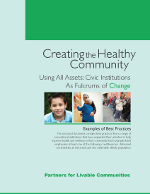
Partners compiled a collection of best practices of traditional community institutions incorporating health and wellness into their agenda and programming to improve community health. The best practices focus on improving the health of at least one of three constituencies: distressed communities, at-risk youth, and the vulnerable elderly.
Examples of institutions include arts and culture organizations, botanical gardens, community development corporations (CDCs), faith-based organizations, libraries, museums, public markets, and zoos.
Click here to download Creating the Healthy Community - Using All Assets: Institutions as Fulcrums of Change
Read more »
Terms:Aging, Community Building, Community Development, Community Engagement, Creating The Healthy Community, Cultural Institutions, Health & Wellness, Healthy Communities, Institutions as Fulcrums of Change , Intergenerational, Libraries, Program Areas, Public Health
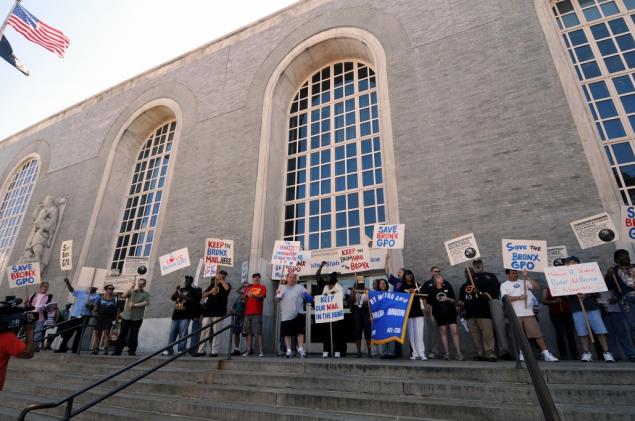 An article published in the Washington Post earlier this week highlights the dramatic decline of the United States Postal Service and the financial difficulty that it is facing today. Since the passing of the Postal Accountability and Enhancement Act (PAEA) in 2006, the postal service has started running massive deficits has been forced to lay off tens of thousands of workers. To remedy this financial mess, the USPS has increasingly started to sell historic Post Office buildings, often centrally located on valuable tracts of land, to raise money. An article published in the Washington Post earlier this week highlights the dramatic decline of the United States Postal Service and the financial difficulty that it is facing today. Since the passing of the Postal Accountability and Enhancement Act (PAEA) in 2006, the postal service has started running massive deficits has been forced to lay off tens of thousands of workers. To remedy this financial mess, the USPS has increasingly started to sell historic Post Office buildings, often centrally located on valuable tracts of land, to raise money.
Read more »
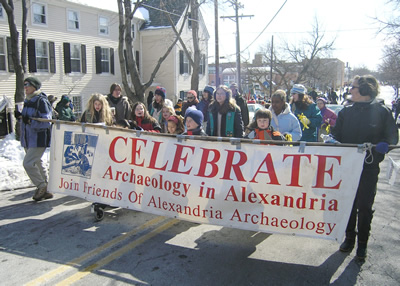
During the 1960s, Washington, DC and its surrounding communities experienced an urban renewal that saw a rebuilding of infrastructure and consequently required the destruction of a number of older buildings in the area. In Alexandria, an independent city a short distance from DC, the destruction of the old buildings uncovered an abundance of historical artifacts that shed light on the history of the area. Realizing that there was a plethora of previously undiscovered, culturally-important artifacts right beneath their feet, the city’s leadership created the Office of Historic Alexandria to try to cultivate and make sense of this new information.
Read more »
Terms:Community Building, Community Engagement, Creative Economy, Cultural Institutions, Heritage, Historic Preservation, IFC Best Practice, Museums, Public-Private Partnerships, Tourism, Washington, DC
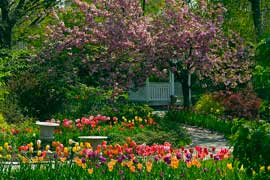
New York City is widely considered to be one of the most diverse places on the planet, with residents from hundreds of different countries living within close proximity of each other. Queens in particular has a broad mix of ethnic populations, which have lead some to consider it the most culturally diverse area in the world. Yet, when Susan Lacerte became the Executive Director of the Queens Botanical Garden, she noticed that the diversity of the borough was not reflected in the Botanical Garden’s attendance. To challenge that, Lacerte started The Ambassador Program to reach out to ethnic communities and find out what they wanted in their public garden.
Read more »
Terms:Arts & Culture, Community Building, Community Engagement, Cultural Institutions, Diversity, Healthy Communities, Heritage, IFC Best Practice, Multicultural, New York City, NY, Parks, Playgrounds & Gardens, Urban
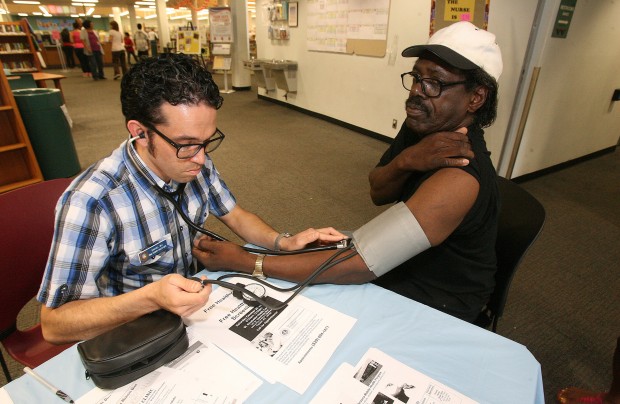
For many counties throughout the United States, the public library system plays an important role in the community, serving as a center for social, cultural, and educational activity. These institutions have become especially important to the homeless and low-income families who may not be able to afford the amenities provided by the library. Pima County, Arizona’s public library system, however, began a program in 2010 that strives to serve another growing need that many communities throughout the country face – access to healthcare.
Read more »

For residents of Chicago’s northern suburbs, the Chicago Botanic Garden is much more than just a collection of colorful plants and flowers. Since it opened more than 40 years ago, the 385 acre grounds have served as an important center for community activity and education. The Garden is home to 26 separate gardens and four natural areas, as well as a conservation science education center and a library with one of the country’s largest collections of botanical books. The grounds are also host to numerous community events and educational courses throughout the year.
Read more »
Terms:Arts & Culture, Chicago, IL, Community Development, Creative Economy, Cultural Institutions, Design, Environment, IFC Best Practice, Institutions as Fulcrums of Change , Parks, Playgrounds & Gardens
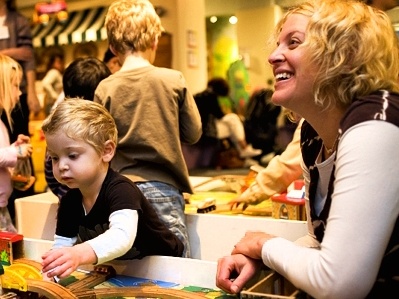
The Habitot Children’s Museum first opened its doors in downtown Berkley in 1998, and the institution has served over 950,000 residents of underserved communities in the Bay Area since. The 7,000 sq. foot facility is home to exhibits that help teach kids about the value of physical activity, water preservation, and art and culture. The hands-on Museum encourages early childhood education and aims to help support a generation of curious and creative kids.
Read more »
Terms:Arts & Culture, Community Building, Creative Economy, Cultural Institutions, Downtown Development, Education, Families, IFC Best Practice, Institutions as Fulcrums of Change , Museums, Youth
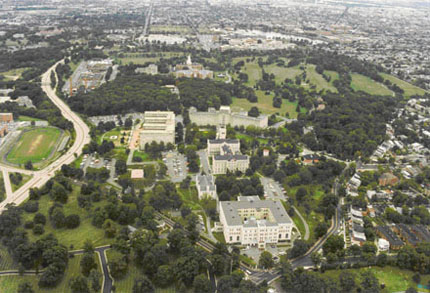
The U.S. Armed Forces Retirement Home in Washington, D.C., commonly referred to as the ‘Soldiers’ Home,’ is one of the country’s oldest veterans’ retirement homes and certainly one of the most beautiful. Located on a 273-acre campus in Northwest D.C., the Home’s green pastures and tranquil lakes sit in stark contrast to the developed neighborhoods of the surrounding community. Since the home opened in 1851, the retirement community has been home to thousands of retired elderly and disabled veterans in the Washington area.
Read more »
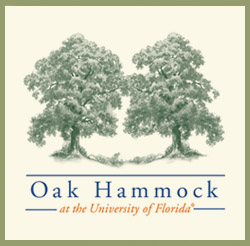
When Dr. Gordon Streib, a sociology professor at the University of Florida, first pitched the idea of sponsoring a retirement community on the UF campus in 1997, it was understandably met with skepticism by the University leadership. It would seem difficult for the late-night lifestyles of college students and the generally more peaceful temperaments of senior citizens to coexist. Nearly 10 years after the retirement community opened its doors in 2004, however, the establishment of the Oak Hammock Retirement Home has proven to be such a resounding success that there is already a waiting list to get in.
Read more »
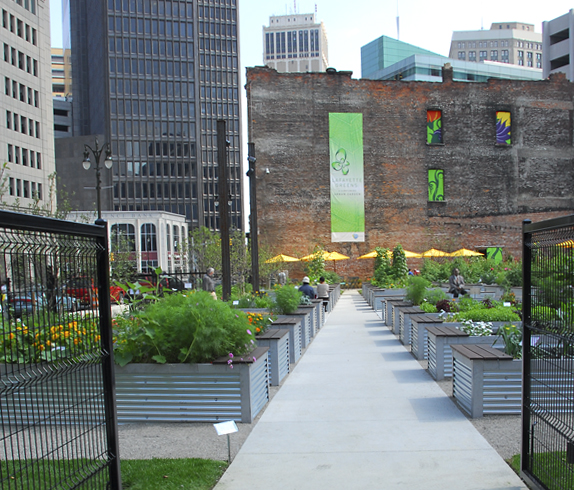
In 1923, when the Lafayette Building was constructed in downtown Detroit, the city was one of the cultural centers of the United States and home to an exploding automotive industry. Famous American architect C. Howard Crane designed the cutting edge, Italian Renaissance-style building in a unique ‘V’ shape to maximize the amount of natural light allowed in. Today, however, Detroit has fallen on harder economic times, and the once striking skyscraper at 144 West Lafayette was torn down in 2010 after being vacant for more than a decade.
Read more »
Terms:Community Building, Cultural Institutions, Downtown Development, Environment, Health & Wellness, Historic Preservation, IFC Best Practice, Neighborhood Revitalization, Parks, Playgrounds & Gardens, Urban
Lyz Crane draws on the work of practitioners and researchers to characterize the field of arts-based community development in which arts and culture can help achieve place based change related to the physical, social, and economic dimensions of place. This paper examines the premise that the existence of arts is considered a powerful end in itself, Crane then outlines the variety of ways that the actors and activities involved in arts and community development work can relate to and interact with each other to create sustainable communities. Looking at the cultural ecology of place, creative economy development focuses on fostering local creative businesses and supporting creative workers both in the arts and in supporting industries while cultural development may focus on preserving cultural assets—traditions, language, stories—or on building on them to create stronger, more connected communities. There is also a complex community development ecosystem of organizations, interests, and tools. Stakeholders may involve arts in their agendas, create arts programming, provide or develop arts spaces, employ artists, and/or partner with arts organizations. Indeed, both the arts and community development are part of the same ecosystem and all of these 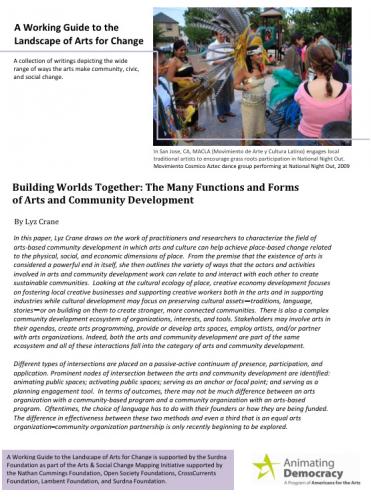 interactions fall into the category of arts and community development. interactions fall into the category of arts and community development.
Crane places different types of intersections on a passive-active continuum of presence, participation, and application. Prominent nodes of intersection between the arts and community development are identified: animating public spaces; activating public spaces; serving as an anchor or focal point; and serving as a planning engagement tool. Crane points out that, in terms of outcomes, there may not be much difference between an arts organization with a community-based program and a community organization with an arts-based program. Oftentimes, the choice of language has to do with their founders or how they are being funded. The difference in effectiveness between these two methods and even a third that is an equal arts organization–community organization partnership is only recently beginning to be explored.
Click here to download the whole document.
Read more »
Terms:2012, Arts & Culture, Business, CBC Report/Publication, Community Building, Community Development, Community Engagement, Creative Economy, Cultural Institutions, Featured, Other Reports/Publications, Placemaking, Public Art, Public-Private Partnerships
 photo credit Deeply Rooted Productions photo credit Deeply Rooted Productions
Founded in 1995 by dancers Kevin Iega Jeff and Gary Abbott, Deeply Rooted Dance Theater teaches and performs dance as creative expression and community and spiritual healing. Jeff calls it “world class art from a grassroots perspective.”
Working within an African American dance aesthetic, Deeply Rooted explores topics as varied as the Somali civil war and famine, the quest to live in the face of AIDS, and early-twentieth-century African American cultures. Jeff and Abbott’s choreography stresses both technical virtuosity and the deep exploration of character and community. As one dancer explains regarding Deeply Rooted’s Life, which deals with personal struggles to live with AIDS, “I know I’m telling experiences of things I see every day. Right outside these doors, there’s some things about this piece that are going on.”
Read more »
Terms:2012, Aging, Aging in Place, AIP Best Practice, Arts & Culture, Chicago, IL, City Leaders Institute on Aging in Place, Cultural Institutions, Health & Wellness, Multicultural
 photo credit Northwood Park Historical Society photo credit Northwood Park Historical Society
The vision of the Norwood Park Historical Society (NPHS) is to be “recognized as a leader, educator, advocate, and resource” in the community of Norwood Park that “values and preserves its historic character and is acknowledged as an area of historical importance to the city of Chicago and the region.” To reach out to older adults, the NPHS launched Voices of Norwood Park, a personal-history project designed to educate older adults about methods for recording their histories and for collecting written and oral histories of their lives and times in Norwood Park.
Norwood Park is one of the oldest, most distinctive, and historically important neighborhoods in the Chicago metropolitan area. NPHS was formed in 1973 to preserve Norwood Park’s history and promote community awareness. The Society has transformed the oldest house in Chicago, which serves as its offices, into a multipurpose community center with a museum and a café. Its museum focuses on Chicago’s far-northwest side and has a growing collection of historical artifacts and research materials.
Read more »
Terms:2012, Aging, Aging in Place, AIP Best Practice, Chicago, IL, City Leaders Institute on Aging in Place, Community Engagement, Cultural Institutions, Heritage, Historic Preservation, Intergenerational
 photo credit Lifetime Arts photo credit Lifetime Arts
Founded in 2008, Lifetime Arts promotes arts programming designed to engage older adults. A nonprofit organization, Lifetime Arts is committed to developing innovative programs which support creative aging and lifelong learning. To that end, Lifetime Arts offers a variety of services and programs. The organization is a clearinghouse for best practices; provides technical assistance, information services, and professional development to the individuals and organizations serving older adults through the arts; and helps to develop policy to enhance the quality of arts programs for older adults throughout the country.
As a service organization, Lifetime Arts developed Creative Aging in Our Communities: The Public Libraries Project, a program which demonstrates the viability and value of instructional arts programs offered in public libraries as a way to build a broad base of support for creative aging programming. The Public Libraries Project showcases the library as a center for access and learning for older adults; an “age-neutral” public space, the library is an accessible hub for older adults who are reluctant to go to senior centers, and is swiftly becoming an ideal center for programs that interest seniors.
Read more »
Terms:2012, Aging, AIP Best Practice, Arts & Culture, City Leaders Institute on Aging in Place, Community Engagement, Cultural Institutions, Culture Builds Communities, Life-Long Learning, New York City, NY, Rural
 photo credit Intergeneration Orchestra of Omaha photo credit Intergeneration Orchestra of Omaha
Symbolized by a rose in full bloom and a rose bud, the Intergeneration Orchestra of Omaha (IGO Omaha) joins older, experienced musicians with young musicians, using a love of music to bridge generation gaps. The Orchestra explains that, “The rose in full bloom signifies the lifetime of experience the older musicians bring to the group, while the rosebud represents the emerging talents of our younger artists.” This intergenerational program is a win-win for all involved; the young gain the opportunity to develop their skills, while older participants are able to play the music they love well past the age of retirement. Perhaps more significantly, both young and old find support and friendship as they pursue musical excellence.
With the goal of joining two distinct generations “through the universal language of music,” the IGO of Omaha was started by Chris Gillette, current project director of the Orchestra and the director of the Community Services Division of the Eastern Nebraska Office on Aging (ENOA), and former co-worker Cora Lee Bell. The Orchestra was initially funded by a grant from the Peter Kiewit Foundation, but has since been supported by numerous other grants, donations, memberships, fundraisers, and performance fees, and a sponsorship from ENOA. The Orchestra is run by an elected board of directors, which includes two younger and two older musicians.
Read more »
Terms:2012, Aging, Aging in Place, AIP Best Practice, Arts & Culture, City Leaders Institute on Aging in Place, Community Engagement, Cultural Institutions, Intergenerational, Life-Long Learning, Youth
Housed in a stunning building designed by Frank Lloyd Wright, ASU Gammage at Arizona State University, one of the largest university-based theaters in the world, has been broadening its audience for many years. Its outreach extends to both immigrant and older adult audiences. Widely recognized for its work in Phoenix, ASU Gammage’s commitment becomes evident in the role played by one of its staff members: Michael Reed, the senior director of Cultural Participation and Programming, is responsible for developing and overseeing an astonishing array of performances, including explorations of theater arts for all ages, and programs highlighting the arts of various cultures.
The commitment to accommodating older adults, for example, was demonstrated while The Phantom of the Opera was at the theater for a four-week run. To better suit the preferences of older adult audiences, some performances were scheduled as matinees. Reed also explains that the house staff is very experienced in working with older adults and those who are frail or have disabilities. The staff works with ARTability, an Arizona organization that promotes accessibility to the arts for those with disabilities. Before each season begins, the staff reviews issues related to the Americans with Disabilities Act (ADA), though Frank Lloyd Wright’s design, while handsome, has made retrofitting ASU Gammage to meet the requirements of the ADA, and other evolving audience needs, quite difficult.
Read more »
Terms:2012, Aging, Aging in Place, AIP Best Practice, Arizona, Arts & Culture, City Leaders Institute on Aging in Place, Community Engagement, Cultural Institutions, Diversity, Education, Immigration, Intergenerational, Mobility, Youth
 Partners for Livable Communities presents a PowerPoint presentation to accompany the 2012 Stories for Change report. This presentation is for community residents, city leaders, arts and cultural institutions, and many more to share the great stories of innovation and creativity featured in the Stories for Change report to begin discussions of reaching out to older adults and immigrants with the community. Partners for Livable Communities presents a PowerPoint presentation to accompany the 2012 Stories for Change report. This presentation is for community residents, city leaders, arts and cultural institutions, and many more to share the great stories of innovation and creativity featured in the Stories for Change report to begin discussions of reaching out to older adults and immigrants with the community.
Read more »
Undoubtedly the turn of the 21st century has been a crossroads for communities across America. Planners are becoming more uncertain of which road to take to towards livability, the latest and most thought out models of revitalization being thrown into disarray by constant redevelopments in technology and the unforseeable factors that mediate the outcome. But as the unfolding of the digital age propels us into the unknown, there is one thing that is certain—education is a key to building a more vibrant and sustainable community.
Read more »
Entrepreneurial American Leadership Award
For her extensive career in the preservation and promotion of local arts, culture, and heritage for our diverse American population.
Read more »
|
|